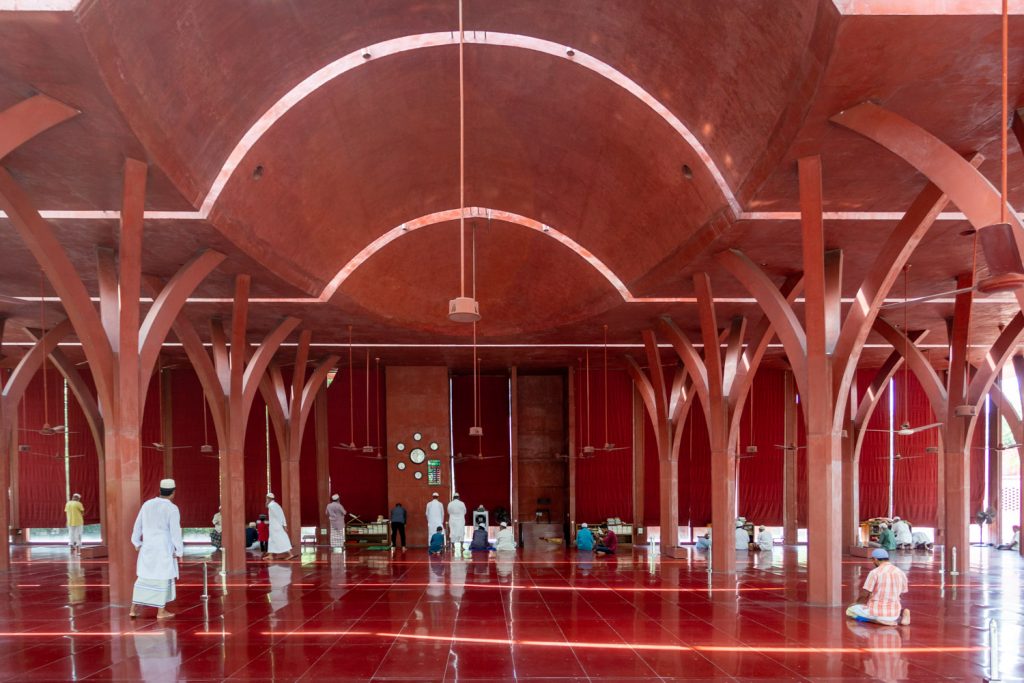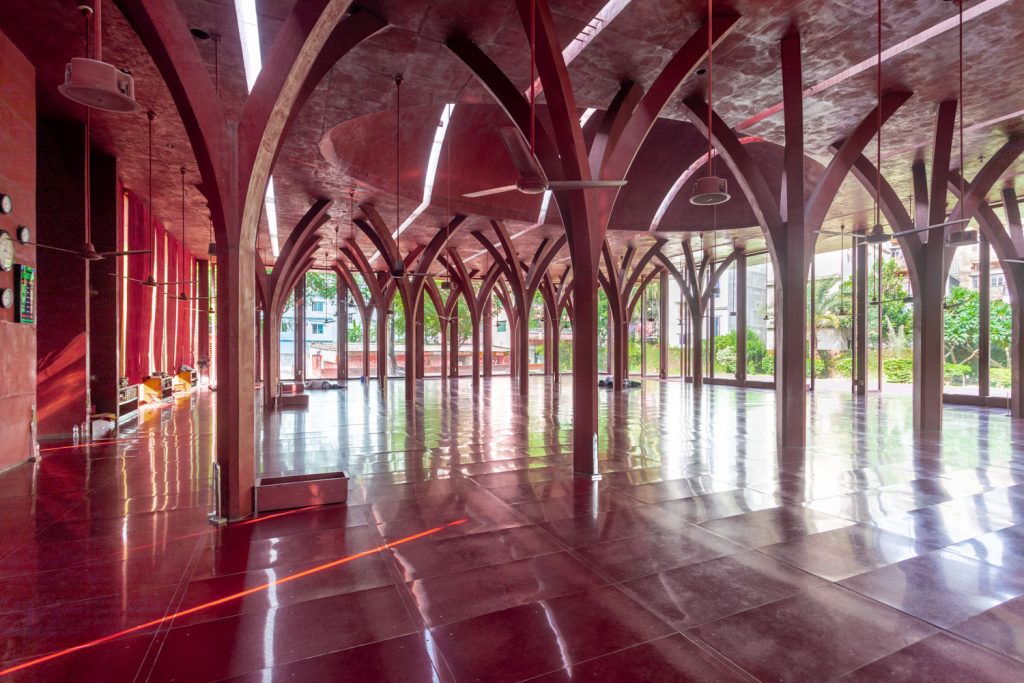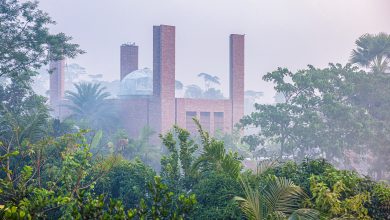“Inspired by the simplicity of the first mosque in Islam, the Red Mosque takes on a true pavilion form.” — Kashef Chowdhury

In the quiet suburb of Doleshwar, Keraniganj, just outside the crowded sprawl of Dhaka, stands a structure that redefines the language of sacred architecture in Bangladesh. Bangladesh’s Red Mosque of Doleshwar, designed by architect Kashef Chowdhury – URBANA, tells a story of peace, continuity, and renewal. In a time when mosques often lean toward grandeur and ornamentation, this project marks a return to essence — echoing the architectural purity of the very first mosque in Islam.

In conceptualizing the Red Mosque, Chowdhury looked back over 1,400 years to the Prophet’s Mosque in Madina, the earliest form of Islamic worship space. That mosque was a humble courtyard, open to the sky and rooted in the principles of congregation, reflection, and community. Similarly, the Doleshwar Red Mosque is conceived as a pavilion — open on all sides, surrounded by a shallow body of water, and grounded in simplicity.

The water body that encircles the structure does more than visually elevate it; it introduces a cooling effect in Bangladesh’s tropical climate, reducing dependence on mechanical air-conditioning. The design thus embodies both environmental intelligence and spiritual symbolism — purification, reflection, and renewal.
The architecture of the Red Mosque is intentionally restrained. The structure is made entirely of exposed red concrete, its floors finished in local red terrazzo — a choice that visually harmonizes with the adjacent 200-year-old mosque, restored by Professor Abu Sayeed Ahmed, recipient of a UNESCO Award for Cultural Heritage Conservation. Together, the old and new mosques form a dialogue — a conversation between memory and modernity.

There are no ornate inscriptions, no intricate tilework or domes. Instead, the design celebrates light, geometry, and proportion. The roof consists of a sequence of concrete slabs, each separated by narrow slits that allow daylight to filter through. These openings create a rhythmic play of shadow and illumination across the prayer hall, suggesting a quiet spirituality that transcends material expression.

Supporting this roof are columns that branch like trees, meeting the slabs above in graceful intersections. From certain angles, these branching supports form abstracted arches — a subtle nod to the traditional Islamic architectural vocabulary. At the center of the roof, the slabs rise and swell into an ovoid form, giving the prayer space a sense of elevation and transcendence. The interplay between the structural and the spiritual becomes seamless, as if the very act of construction is a gesture of devotion.
“In a climate where summers can get very hot, the Red Mosque breathes naturally, without a single air-conditioning unit.”
This statement by the architect encapsulates the mosque’s environmental intelligence. The pavilion’s six-meter-tall openings ensure constant cross-ventilation, allowing the building to cool naturally. The surrounding water further tempers the air before it enters, creating a comfortable microclimate even during peak summer months.

The reliance on manual craftsmanship underscores URBANA’s philosophy of context-sensitive design. Every structural detail — from the intricate formwork of the tree-like columns to the surface finish of the red concrete — was crafted by local artisans using simple tools. This not only reduced construction costs but also embedded the project within the community that would ultimately use and care for it. The mosque thus becomes not just a place of worship, but a testament to collective skill and labor.
The Red Mosque’s realization is also a story of collaboration and vision. Its patron, Nasrul Hamid MP, provided unwavering support throughout the process. His brief to the architect was succinct yet profound: “Save the 200-year-old mosque built by my forefathers.”
The design team led by Kashef Chowdhury worked in tandem with Prof. Abu Sayeed Ahmed’s restoration team, ensuring that the new structure would not overshadow the old but rather complement it. The two mosques — separated by centuries but united in purpose — embody continuity in faith and architectural evolution. Their shared palette of red materials visually ties them together, bridging past and present.
In the dense, chaotic landscape of Keraniganj, surrounded by factories, roads, and noise, the Red Mosque offers an oasis of calm. Its openness dissolves the boundary between inside and outside — between the spiritual and the everyday. The light-filled space invites worshippers to pause, breathe, and reflect.
The surrounding gardens and plazas extend this tranquility outward, creating communal spaces for gathering, contemplation, and connection. Every design decision — from the open courtyards to the material palette — reinforces the mosque’s meditative quality. Here, architecture is not a backdrop for prayer but a participant in it.

The Red Mosque of Doleshwar stands as one of the most compelling examples of contemporary Islamic architecture in Bangladesh — not for its grandeur, but for its restraint. It embodies a spiritual and architectural ethos that finds meaning in the essential: air, light, water, and form.
It invites worshippers and visitors alike to experience faith not through ornamentation but through space — through the silence between slabs of concrete, through the dappled light on red floors, and through the quiet presence of water that mirrors the sky.

In an age where the sacred is often monumentalized, the Red Mosque reminds us that holiness can reside in simplicity. It is a work that bridges heritage and modernity, local craft and global sensibility — a sanctuary that breathes, glows, and renews.




